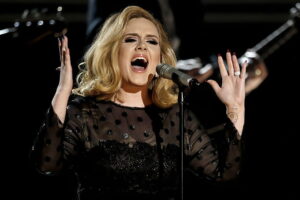We all love the look of fit and sexy. But traditional dieting is something very hard to follow and annoying too. And this is how I started with a flexible dieting. Flexible dieting is a blessing for me, as I’m not someone who’s great at clean eating. I was introduced to flexible dieting many years ago, and trust me guys, it is not at all like the traditional one, and actually fun to follow.
For years, I was being told that if I want to stay fit and healthy, then I have to avoid bad foods like cakes, cookies, ice-creams, french fries, candy bars, white breads, etc. But it is very difficult for me to imagine a life without including even a little part of them. And this is where a flexible dieting lifestyle fits rightly for me. Yes, with this dieting, I can have a small piece of my favorite blueberry cake quite often.
I have been into flexible dieting for quite a time now, and it has actually worked amazingly well in losing weight as well as gaining muscles. So before I start blabbing about this thing, let me introduce you to the world of flexible dieting.
What is Flexible Dieting?
According to me, it’s all in the name. The best part of flexible dieting is that you are not bound to have specific food items. You can eat whatever you want, as long as the food is healthy for you. The only thing that needs to take care is that you are not exceeding the calories. This dieting plan includes counting of macros or calories you are having in the whole day. It is about meeting the macros goal, and not exceeding it.
Benefits of Flexible Dieting
- It is a really effective and fun way of getting fitter. This plan focuses on the quantity rather than quality, which makes it different from other dieting plans.
- It is flexible. You do not have to stick to the routine diet meal; you can have your favorite dessert too. This allows you to eat out at restaurants, have meals with family, and also attain the barbeque party without having any effect on the diet plan.
- It is easy to stick to flexible dieting for a long time, as it allows us to be free and enjoy life.
What are the Macros in Flexible Dieting?
Before going any further, let me get your basics clear. Macros or macronutrients are basically either carbohydrates, proteins, or fats. Each of this nutrient is broken down in the body to form energy. The energy released by these nutrients are measured in calories. For reference,
1 g of proteins = 4 kcal
1 g of carbohydrates = 4 kcal
1 g of fats = 9 kcal
Therefore, everything we eat gets broken into macros and so calories. The entire concept of flexible dieting is eating whatever you want if it fits your macros.
How To Calculate Macros for Flexible Dieting?
Before starting to calculate macros, you need to know your total daily energy expenditure. The idea is if you eat that number of calories in your intake, then you will be able to maintain the body weight. So for that, you need to decide what exactly your goal is? Do you want to lose weight, build muscle, lose body fat, or maintain physique? Your percent of TDEE will vary according to the goal you select.
You have to calculate macros by tracking what you are eating and in what quantity. You can make all this tracking easier by installing a dieting app. I prefer using My Fitness Pal, as it is free and very easy to use.
Now if you are planning to go for flexible dieting, then here are some things you should know before starting:
Use Free Macro Calculator
The best way to know how many calories you can have in a day is by using a free macro calculator. Use the free calculator to know your total daily energy expenditure (TDEE). This is the right time to get started with tracking numbers. You simply need to feed some basic information like age, gender, weight, height, etc. along with your desired goal, and this macro calculator will help you in knowing your macro ratios. If your goal is to lose body fat, then you’ll have to eat less than the TDEE; whereas if your goal is building muscle, then you need to eat more than that. TDEE is ideally the amount you need to eat for maintaining the body weight.
However, there is no exact number to follow, so do not get too caught up in numbers. This app just shows the estimated number of macros, so that you get a handle on it.
Purchase Food Scale
You’ll need certain tools to get started. You cannot track the exact quantity of macros without knowing your servings. And this is where the food scale comes handy. I found using the food scale very helpful, at least in my initial days, and it is a savior when you plan to eat out. I know it is a bit tedious to measure each serving, but with time you will get used to it.
Sign Up For Macros Tracking App
Macros tracking app is the most useful thing when you plan on starting the flexible dieting lifestyle. So download this app on your phone, and sign up to make tracking easier. After making your account, you would need to enter the calculated macros in the first step. You should set the percentage of carbs, fat, and proteins as close as the calculated ones. The best part of using a tracking app is that you can know the remaining macros simply at a glance.
Start Tracking
For initial few days, I will recommend you to eat normally as you do, and just enter everything in your tracking app. This is when you will get an exact idea of your current diet, and you can start with making small adjustments to it. For example, if you think the sandwich you had last night was very high in cards, then switch it with steak and veggies. It took me quite a decent amount of time to know what my diet should be.
You need to add each meal of the day into the app. Just search for the food you had from the menu and enter it with proper quantities.
Track Water Intake
Not only food, but you should also keep a track of daily water intake. It is said that we should drink at least 2-3 liters of water daily. Water helps in keeping you hydrated, boosting metabolism, and flushing out toxins. This helps a lot when you want to stay fit.
Plan Meals
Planning meals in advance will help you a lot in filling the macros. It is a great idea to get into the habit of preparing a meal plan at the start of the day itself. This will help you calculate the exact number of calories you can have, without altering any fact. Look up for the nutritional values before including it to your diet. This also helps me to get creative with my food, as I try different dishes as per my macro intake.
It is necessary you educate yourself on the subject of macronutrients, nutrition, and training. This will increase your chances of success. The more you know, the more you will be confident and committed towards your plan.
Have Fun With Food
Do not go for the processed food, but instead invest in whole and nutritional food. Try getting creative with your food. You don’t always have to rely on leafy veggies and beans; you can combine and make a great dish by keeping your remaining macros in mind. At times, you can also treat yourself with a little dessert, if you plan on cutting down calories from the whole day. So do not go with the same plain food daily; use your cooking skills to make your dieting plan interesting.
Stay Consistent
Okay, now when you have started, you just need to be consistent. The more accurate and consistent you are, the earlier you will see the results. Try sticking to the numbers for the first few weeks, and later on you’ll get used to it. I recommend you to measure your weight regularly and keep track of it; do not worry about the fluctuations. This will help in noticing the difference and will be a motivation too. And remember, nothing is going to change in a night, it will take time. Patience is the key in flexible dieting.
Pro Tips That Helped Me A Lot
- Do not obsess and be hard on yourself; it will take months to see the actual change.
- Do not forget that life is for enjoying, and not for strict diets. So take out little time from here and there to enjoy life. You can go for cheat day once in a while, and this will help you while travelling or on vacations.
- Go for real, whole food instead of processed, low-nutritional ones, as these will just eat up your daily calories.
- Plan at the start of the day itself, it helps in accommodating that dish which you want to have from many days.
- You can eat whatever you want, but just remember a little portion is the key.
- Focus on fitness rather than losing weight. This helps in the long term, and you will obviously lose weight in the process.
- Numbers aren’t for accurate measures, they are just for guidelines. A little deviation is always acceptable.
- If you have exceeded your calorie count on a day, just forget about it and move on. There is no use of feeling guilty over it.
- Remember, everyone’s metabolism is different, and so it takes a different amount of time to see the results for everyone. Do not get disheartened if it has worked for your friend in less time, and not for you.
Flexible Dieting Myths
Before wrapping up, here are some flexible dieting myths that I need to burst:
- You can eat whatever food you want in however quantity.
You can eat whatever food you want but be careful of the nutritional value and the portion you are having. As I said earlier, the whole concept is about having food in portions. It is better if you avoid processed foods as long as you can.
- Flexible dieting is unhealthy.
Flexible dieting is basically not a diet at all. It is just a way of eating and living your life as you want. The basic mantra is of eating 90% healthy full of nutritional foods, and rest 10% you can have whatever you want. If you want to go ahead, then make it 95/5. Remember, there are no rules, it all depends on your own preference.
- You can eat junk food quite often.
The basic idea of flexible dieting is to be sane while eating. You need to eat a minimal amount of processed foods, as they have very less nutritional values. The idea is to have less processed food and maximum space for nutritional food, and not the other way around.
- Flexible dieters are obsessed with tracking macros.
It is about reaching your goal, and not exactly perfect with the numbers. A little deviation is always okay. Trying to be perfect on numbers ruins the whole flexible eating thing. The numbers are just an estimate as a guideline, and not the exact amount needed.
The bottom line is that there’s nothing wrong in eating whatever you want, as life is about enjoying and not restricting yourself. You just need to be careful of the quantities you are having and if it fits your macros. And this is what flexible dieting does for us. However, along with flexible dieting, it is always better if you indulge yourself into exercise routine, or at least some kind of physical activity, as this will help in seeing results even faster. After all, dieting and exercises go hand in hand when you want to look and feel fitter.
RELATED POSTS
Adele’s Diet: All About the Sirtfood Diet
We all heard about Adele, a British singer with a magical voice and plump line, who lost 45 kilograms! Some time ago, Adelle appeared at…
Low-Carb Fertility Diet
Women who are planning a pregnancy are strongly advised to switch to a low-carb fertility diet because it can increase the chance of pregnancy. It…
Pros And Cons Of Being Vegetarian
A vegetarian diet has certainly been a hit in recent years. An increasing number of people are switching to this type of diet, for health,…
5 Clever Tips for Eating Out on a Diet
If you’ve been wondering about eating out on a diet, do not worry, because flexible dieting is all about flexibility in your food menu. And…




